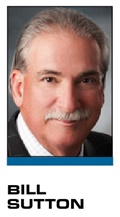First of all, thank you my readers and followers for the thoughts and opinions regarding last month’s column (Jan. 7-13 issue) in which I broached the hunters and farmers concept. Those emails and tweets shaped my thinking regarding the decision to offer a more complete explanation this month.
The hunter/farmer structure is probably not fiscally appropriate for sports organizations at all levels. For example, it would be very difficult to sell this concept to owners of Class A, AA or even some AAA baseball clubs, or minor league hockey, non-BCS collegiate basketball programs and so forth.
But I would state that when recruiting staff and assigning these types of responsibilities, organizations may be better served to look for individuals who have the aggressive skills of the hunter yet possess the patience and empathy of the farmer to nurture and grow accounts. These combinations — the “hunting farmer” or the “farming hunter” — exist, but they are harder to find. Organizations must cast a wider net when they are recruiting to make sure they have the proper fit.
For a sports franchise to truly succeed in sales, it needs both. If a sales team is full of hunters, it may acquire new customers, but it may also experience high attrition in its existing business. If a team is full of farmers, it may have a loyal customer base, but its new business revenue growth will usually be minimal.
Implementing the Hunter/Farmer Model
Thoughts and suggestions to consider:
> The farmer must have a manageable number of accounts so that regular communication and interaction with each account is possible.
> Allocate 1 to 2 percent of the revenue at stake for farmers to use for renewal-related activities and incentives.
> Hunters should have individual and departmental bonus opportunities.
> Farmer bonuses should be multiple and incremental after a floor renewal rate (say 75 to 80 percent) has been reached, perhaps every 2.5 percent increase in renewals.
> Hunters who were not at the top of the leaderboard but had good levels of call duration often become great farmers.
> Don’t let the groups become two silos. Create bonuses and incentives for the groups to work together to generate overall revenue.
> The career path for both hunters and farmers to progress should be clear.
With that said, let us examine the concept as it relates to larger sports organizations with significant revenue at stake among their current season-ticket holders and sponsors. At the same time, these organizations have lofty new business revenue goals to sell sponsorships and new season-ticket plans.
In terms of revenue, it should be fairly apparent that a farming function, whether it be retaining and renewing season-ticket holders or activating sponsorships and renewing and up-selling those accounts, will result in higher levels of retained customers and revenue than would a group charged with not only those functions, but also prospecting, making new sales calls and closing new business. While it has been done and done effectively for years, the revenue areas have not been maximized as they could be with teams of farmers and teams of hunters devoted solely to pursuing the revenue associated with each of these functions.
I have seen this type of success in my work with the Orlando Magic, the only franchise, to my knowledge, in a team sport utilizing the hunter/farmer model in both ticket sales and retention and corporate partnership sales and activation/retention. With this model employed during the 2011-12 season, Magic corporate partnerships had their highest levels of partnership retention and revenue retained (and grown) as well as new partnership revenue.
A hunter is often defined as a seeker. That is accurate in this context as hunters seek out the revenue from new sources. Everyone understands that hunters prospect and generate revenue from new business accounts, and that the singular focus should enable them to make more sales calls. I would make the recommendation that, since new business revenue is harder to generate, the commissions be increased and an achievable bonus system be employed, particularly in the transition year when renewals have been taken away from them.
Farmers then are charged with all aspects of customer relationship management. A sample of typical farmer duties includes:
■ Manage 300 to 500 accounts and create a communication and interaction strategy for those accounts.
■ Manage CRM records for each account.
■ Work with hunters on transition management of accounts.
■ Plan special events for fan interaction.
■ Manage client needs and up-sell whenever possible.
■ Identify fence-sitters (those undecided about renewal) and create an intervention plan.
 |
Planning special events for fan interaction, such as the on-field batting practice offered by the Pittsburgh Pirates, often falls under the duties of a team’s farmers.
Photo: PITTSBURGH PIRATES
|
■ Work to create a happy and contented client base regardless of team performance.
■ Renew accounts.
The New York Mets and the Pittsburgh Pirates both have excellent examples of special events for fan interaction. Both teams feature on-field batting practice as well as a catch on the field for their season-ticket holders, and the Mets offer some unique interaction such as an annual wine tasting event at Citi Field hosted by hall of famer Tom Seaver with wines from his vineyard. Yes, he autographs the bottles.
There also are modifications to the pure hunter/farmer model that can be successful when employed. The first relates to reintroducing sales personnel into the retention process after an amount of time has passed and the account is classified as not renewed and needing to be resold. Another modification is what I would term as a hybrid or blended approach as to how a new business account is transitioned from the hunter to the farmer. A number of sports organizations employ a joint approach for one year with both the hunter who closed the sale and the farmer who will eventually solely manage the account. Compensation is usually shared along with the dual responsibility for that first year.
Bill Sutton (wsutton1@usf.edu) is the founding director of the sport and entertainment business management MBA at the University of South Florida, and principal of Bill Sutton & Associates. Follow him on Twitter @Sutton_Impact.





